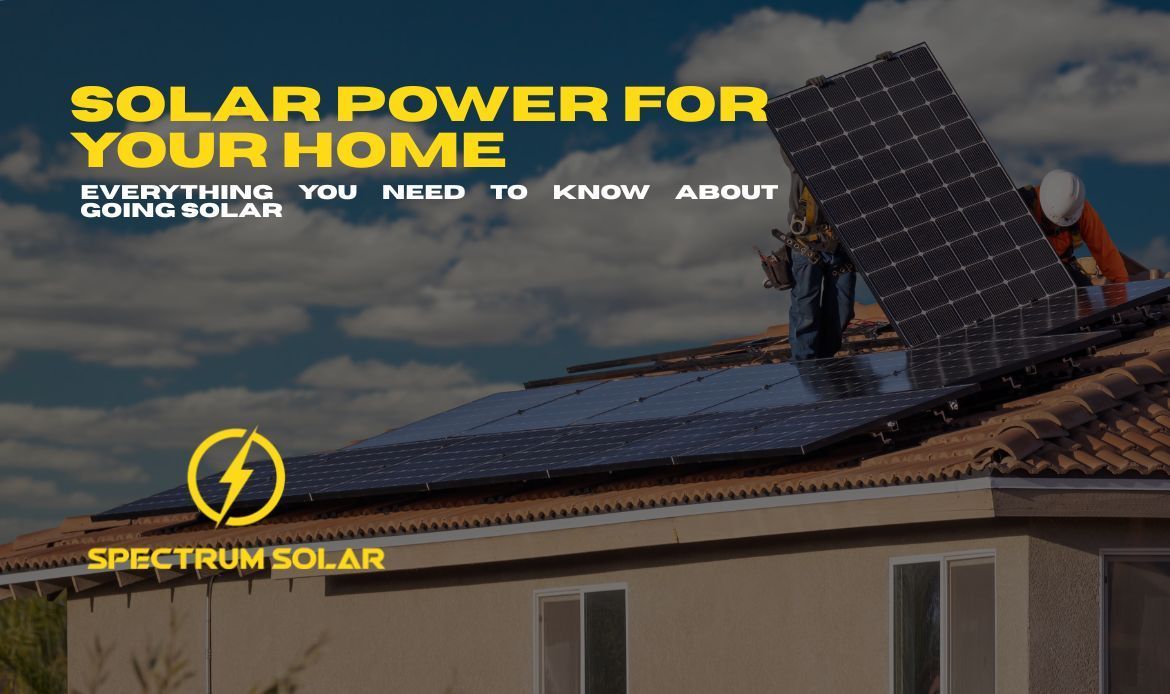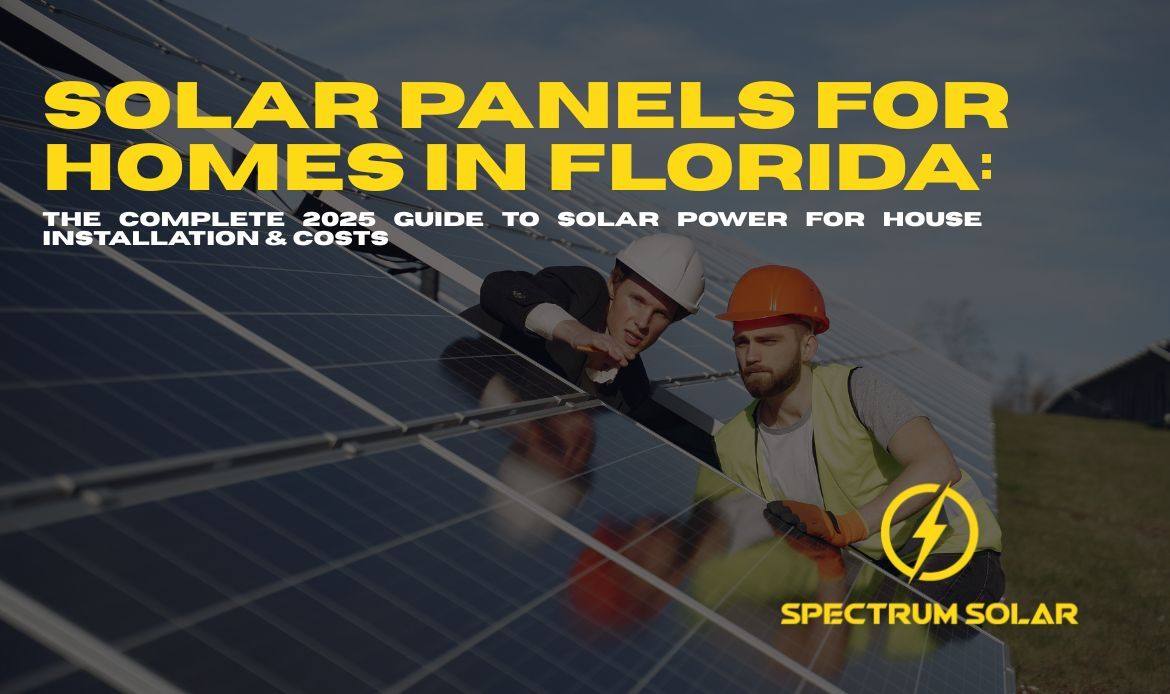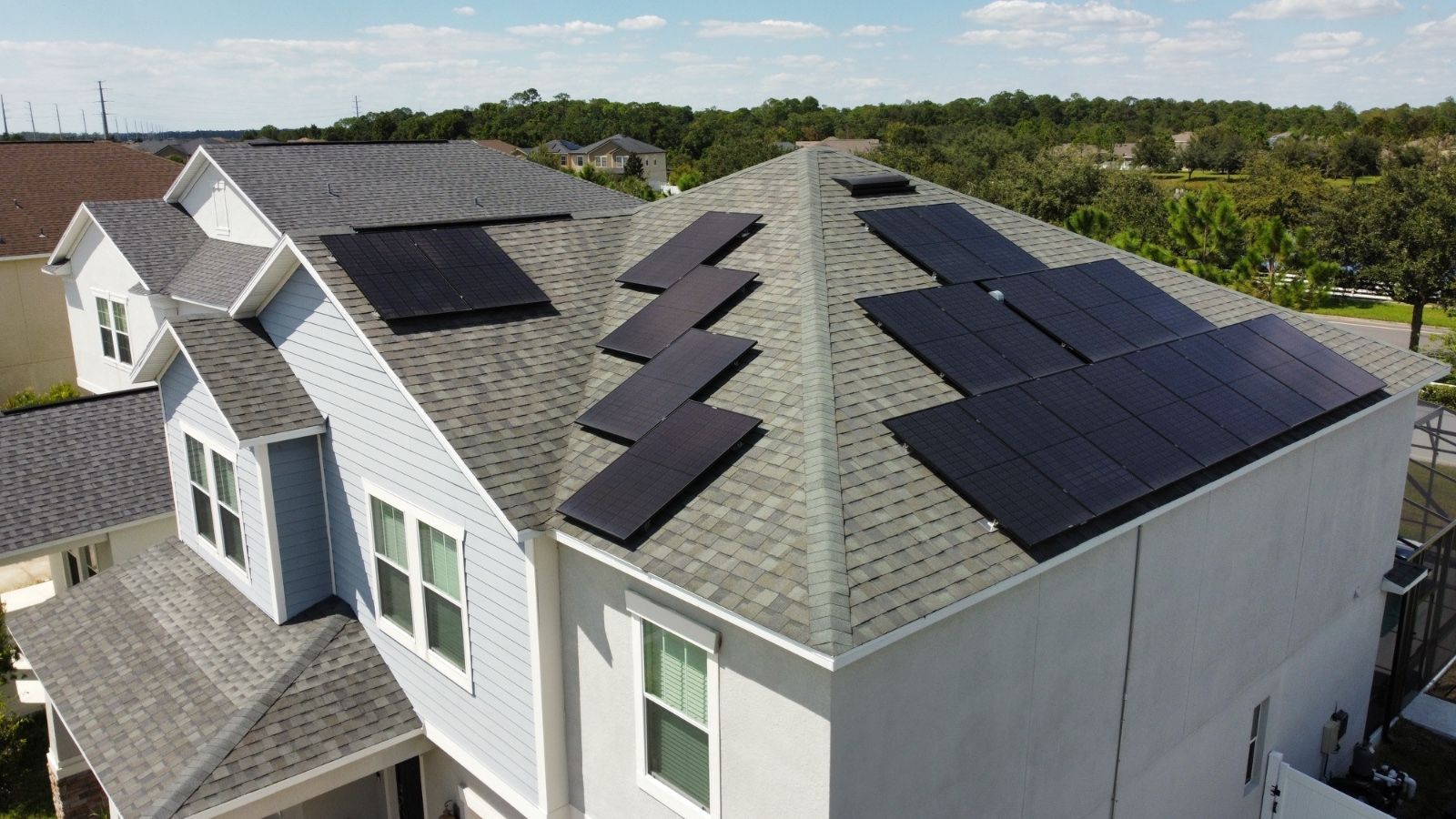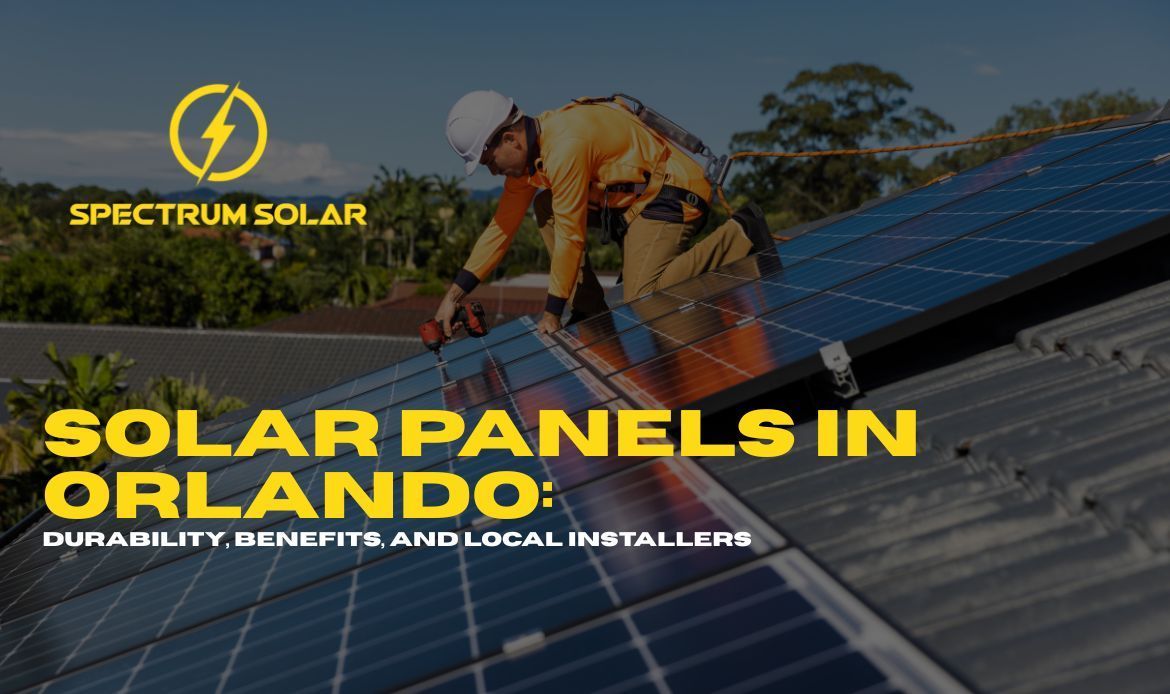Solar Power for Your Home: Everything You Need to Know About Going Solar

Rising electricity bills have prompted more homeowners to ask tough questions about solar power. Can it power an entire house? How much does it cost? Does it work when you need it most? After working with hundreds of families through their solar decisions, we've heard every question imaginable. This guide tackles the real concerns homeowners have about residential solar energy.
Can Solar Panels Power a Whole Home?
Absolutely. We've installed systems that eliminate electric bills for families using 1,500+ kWh per month. The trick isn't magic – it's math. Your roof needs enough space for panels that generate at least as much electricity as you use annually.
Most homes use between 10,000 and 12,000 kWh per year. A typical 8kW solar system generates 12,000-14,000 kWh in sunny states like Florida. That's enough to power everything from your air conditioning to your electric car charger.
What Determines If Solar Can Power Your Home
Your Roof Space: Each panel needs about 18 square feet. Most homes require 16-20 panels for full coverage, which necessitates approximately 350-400 square feet of unshaded roof space.
Your Electric Bills: Pull out your last 12 months of bills. Add up the kWh usage – that's what your solar system needs to generate in a year.
Your Location: A system in Phoenix produces more electricity than the same system in Seattle. Florida homeowners typically need fewer panels than those in northern climates.
Roof Direction: South-facing roofs produce the most power. East and west roofs work fine too, generating about 15-20% less electricity.
We've powered 2,000-square-foot homes with 16 panels and 4,000-square-foot homes with 28 panels. Size matters, but clever system design matters more.
Does Solar Power Work?
Solar power works so well that utilities are scrambling to adapt their business models. The technology has been powering satellites since the 1950s and homes since the 1970s. Today's panels are more efficient and reliable than ever.
Real Performance Numbers
Modern panels convert 19-22% of sunlight into electricity. That might sound low, but it's more than enough. A single panel produces 350-400 watts of power during peak sunlight hours. Multiply that by 20 panels, and you're generating 7-8 kW – enough to run your entire Home during the day.
Panels work in winter, on cloudy days, and even during light rain. They produce less electricity. A good system design accounts for seasonal variations and weather patterns.
The Proof Is Everywhere
Drive through any neighborhood in Florida, California, or Arizona. You'll see panels on rooftops everywhere. These aren't experimental installations – they're families who've eliminated their electric bills.
Commercial buildings, schools, and government facilities run on solar because it's reliable and cost-effective. The Pentagon operates one of the largest solar installations in the country. If it's good enough for national security, it's good enough for your family.
How Solar Power Systems Work
Solar systems are surprisingly simple—no moving parts, no fuel required, no noise. Simply sunlight hitting panels to create electricity.
The Four-Step Process
Panels Create Electricity: Photovoltaic cells convert sunlight directly into DC electricity. Each cell is a tiny electrical generator activated by light.
Inverters Convert Power: Your Home uses AC electricity, so inverters transform the DC power from panels into AC power for your outlets and appliances.
Your Home Uses the Power: Solar electricity flows through your electrical panel just like grid electricity. Your appliances can't tell the difference.
Excess Goes to the Grid: When you generate more than you use, the extra electricity flows back to the utility company through net metering.
The Components That Make It Work
Solar Panels: The workhorses that convert sunlight to electricity. Quality panels last 25-30 years with minimal maintenance.
Inverters: The brains of the system that optimize power production and convert DC to AC. String inverters handle multiple panels while microinverters work with individual panels.
Monitoring: Apps and web portals display the exact amount of electricity your system generates on a daily, monthly, and annual basis.
Net Meter: Special utility meter that tracks electricity flowing in both directions – from the grid to your Home and from your Home to the grid.
What Solar Power Systems Cost
Solar costs have plummeted 85% since 2010. Today's systems cost between $2.50 and $3.50 per watt installed, depending on their size and complexity.
Typical System Costs
Small Home (4-6kW): $12,000-$21,000 before incentives. Average Home (6-8kW): $18,000-$28,000 before incentives. Large Home (8-12kW): $24,000-$42,000 before incentives
These numbers include everything – panels, inverters, mounting equipment, installation, permits, and utility connections.
Where Your Money Goes
Equipment: About 65% of the total cost. Panels, inverters, and mounting hardware from established manufacturers.
Installation: Around 25% covers skilled labor, permits, and inspections. Quality installation prevents problems later.
Soft Costs: The remaining 10% includes system design, permitting, and utility interconnection.
Making Solar Affordable
Federal Tax Credit: Uncle Sam covers 30% of your total system cost through 2032. This isn't a deduction – it's a dollar-for-dollar credit against taxes owed.
State Incentives: Many states offer additional rebates, tax credits, or performance payments. Florida doesn't tax solar equipment purchases.
Financing Options: Solar loans allow you to go solar with no down payment. Monthly payments are often lower than your current electric bill.
Calculating Your Solar Savings
Every Home is different, but calculating potential savings follows the same basic formula.
Your Solar Math
Step 1: Calculate Your Usage - Add up 12 months of electric bills. Look for kWh usage, not dollar amounts. The average American Home uses between 900 and 1,200 kWh per month.
Step 2: Calculate System Size. Divide annual kWh by local solar production per kW. Florida homes typically get 1,400-1,500 kWh per kW annually.
Step 3: Estimate Costs - Multiply the system size by local installation costs. Obtain quotes from multiple contractors to ensure accurate pricing and comparison.
Step 4: Apply Incentives. Subtract 30% federal tax credit and any state/local incentives from gross system cost.
Step 5: Compare Monthly Costs. Compare monthly loan payments to current electric bills. Factor in annual bill increases averaging 2-3%.
Real Example from Orlando
Family Usage: 1,400 kWh monthly (16,800 kWh annually) System Size: 12 kW (16,800 ÷ 1,400 = 12 kW) Gross Cost:$36,000 (12 kW × $3.00/watt) After Tax Credit: $25,200 (30% savings) Monthly Loan Payment: $220-$250 Previous Electric Bill: $280-$320 Monthly Savings: $30-$100
This family eliminates their electric bill while saving money from the very first day.
How to Power Your Home with Solar
Converting to solar power requires planning, but the process is straightforward when done with the assistance of experienced installers.
Before You Start
Energy Efficiency First: Replace old appliances and switch to LED lighting before sizing your solar system. Every kWh you don't use saves money on solar equipment.
Roof Assessment: Check the age and condition of your roof. Replace aging roofs before solar installation to avoid the need to remove panels later.
Utility Research: Understand your utility's net metering policies and interconnection process. Some utilities have better programs than others.
Permit Research: Local building departments have specific requirements for solar installations. Good contractors handle this automatically.
The Installation Process
Site Evaluation: Professional assessment of your roof, electrical system, and energy usage. This determines optimal system size and placement.
System Design: Custom design based on your roof's characteristics, energy needs, and budget. Good design maximizes production while minimizing costs.
Permitting: Building permits, utility applications, and HOA approvals (if required). This paperwork phase typically takes 2-6 weeks.
Installation: Actual installation takes 1-3 days for most homes. Crews install mounting systems, place panels, run wiring, and connect inverters.
Inspection and Activation: Local inspectors verify code compliance, then utility inspectors approve grid connection. System activation happens after all approvals.
Solar Heating for Your Home
Solar power can heat your Home, though the approach depends on your heating system.
Electric Heating Systems
Homes with electric baseboard heaters, heat pumps, or electric furnaces can power their heating directly with solar panels. This is often the most cost-effective approach, as it simply replaces expensive grid electricity with free solar electricity.
Heat pumps work exceptionally well with solar because they're incredibly efficient. Modern heat pumps can provide three to four times more heat than the electricity they consume.
Gas Heating with Solar
Even homes with gas heating benefit from solar by powering:
- Heating system blowers and circulation pumps
- Electric water heaters
- Air conditioning during the summer months
- All other household electricity needs
Many homeowners with gas heating still eliminate 60-80% of their electric bills with solar.
Solar Water Heating
Solar thermal systems heat water directly using the sun's heat rather than electricity. These systems work alongside photovoltaic panels or as standalone installations.
Solar water heating is a sensible option in sunny climates with high hot water usage. Pool heating is another popular application.
Solar Battery Systems for Home Backup
Solar batteries store excess solar energy for use when the panels aren't producing. Battery costs have dropped dramatically, making backup power more affordable.
Why Add Battery Storage
Power Outages: Keep essential appliances, such as lights, refrigerators, and other necessary equipment, running during blackouts.
Time-of-Use Rates: Use stored solar energy during expensive peak rate periods.
Energy Independence: Reduce reliance on the utility grid, especially important in areas with unreliable power.
Storm Preparedness: Maintain power during hurricanes, ice storms, or other natural disasters.
Battery Technology Options
Lithium-Ion: Most popular choice offering high efficiency, long lifespan, and compact size. These batteries last 10-15 years with minimal maintenance.
Lead-Acid: Lower upfront cost, but shorter lifespan and lower efficiency. Mainly used for off-grid applications now.
Saltwater: An environmentally friendly option with an excellent safety profile. Newer technology with a limited track record.
Sizing Your Battery System
Essential Loads: A 10-15 kWh capacity ensures the refrigerator, lights, internet, and phone stay powered during outages.
Comfort Loads: A 20-25 kWh capacity includes fans, some outlets, and limited air conditioning.
Whole Home Backup: 30-40 kWh capacity powers most household needs during extended outages.
Battery System Costs
Lithium Systems: $12,000-$18,000 installed for typical home backup needs
Installation: $2,000-$4,000 for professional installation and electrical integration
Maintenance: Virtually none with lithium systems. Expected 10-15 year lifespan.
The federal tax credit applies to battery systems installed with solar panels, reducing costs by 30%.
Making Your Solar Decision
Solar power works, it can power your entire Home, and it's more affordable than most people realize. After helping hundreds of families make this decision, we've learned that the most significant barrier isn't technical or financial – it's simply taking the first step.
What Really Matters
Financial Analysis: Look at 20-25 year costs and savings, not just the upfront price. Solar systems pay for themselves multiple times over their lifespan.
Roof Condition: Solar panels last 25-30 years. Install them on roofs that will last at least that long.
Energy Goals: Decide whether you want to offset some electricity usage or eliminate bills. Both approaches work.
Future Plans: Solar increases home value and typically transfers to new owners. Don't let moving plans stop you from going solar.
Getting Started Right
Multiple Quotes: Get proposals from at least three licensed contractors. Compare system sizes, equipment brands, and warranty terms to find the best fit for your needs.
Financing Options: Compare cash purchase, solar loans, leases, and power purchase agreements. Each has advantages depending on your situation.
Incentive Timing: The 30% federal tax credit continues through 2032, but some state and local incentives have limited funding.
Seasonal Considerations: Spring and fall are the most popular seasons for installation. Plan for better scheduling and pricing.
Solar energy has evolved from an experimental technology to a mainstream home improvement solution. The panels on your neighbor's roof aren't just environmental statements – they're smart financial decisions that provide decades of savings.
Quality equipment, professional installation, and proper system sizing deliver reliable electricity production that typically exceeds projections. Most homeowners wish they'd installed solar sooner once they see their first $12 electric bill.
The technology works, the economics make sense, and the environmental benefits are real. Whether you're motivated by cost savings, energy independence, or reducing your carbon footprint, solar power offers a proven solution that continues to improve every year.
Spectrum Solar Power has guided hundreds of homeowners through successful solar installations. We provide honest assessments, quality equipment, and professional installation backed by comprehensive warranties. Contact us today to learn how solar power can work for your Home and budget.
FREE SOLAR POWER
SAVINGS ESTIMATE




